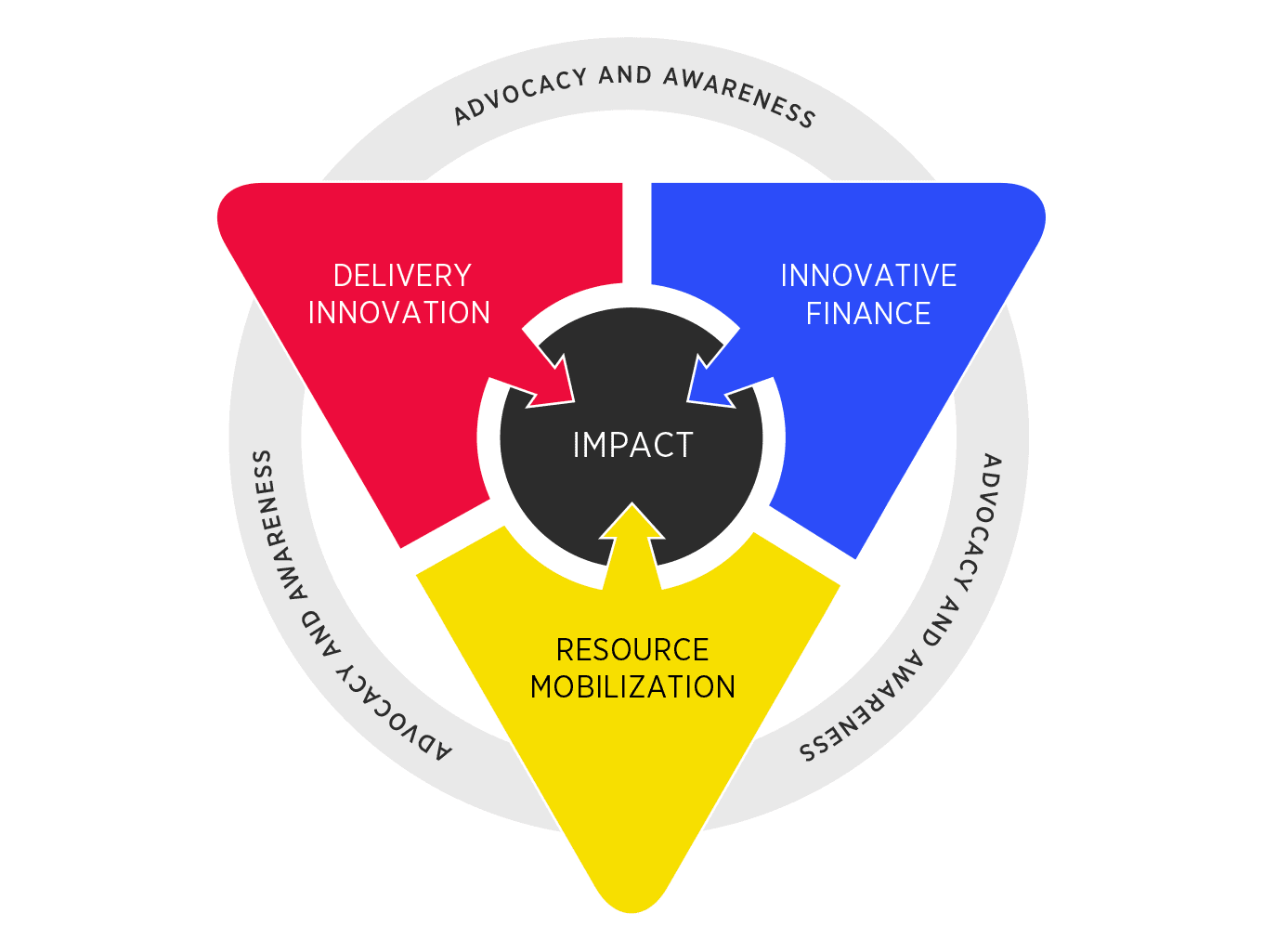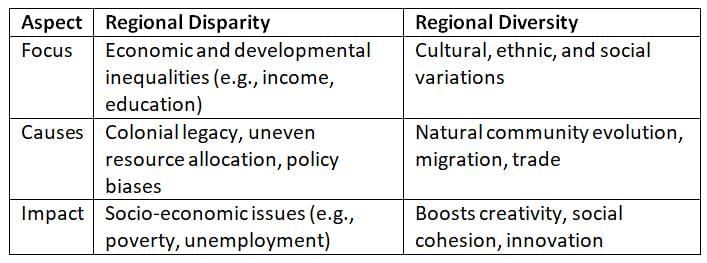UPSC Mains Previous Year Questions 2024: GS1 Indian Society | Indian Society for UPSC CSE PDF Download
Q1: Distinguish between gender equality, gender equity and women's empowerment. Why is it important to take gender concerns into account in programme design and implementation? (Answer in 150 words)
Ans: Introduction
Gender issues are vital for social justice and sustainable development. India's 108th rank (out of 198) on the 2022 Gender Inequality Index highlights the need for progress.
The Difference
Gender in Programme Design and Implementation
- Equity: Gender-specific programs ensure fair resource distribution, promoting societal development.
- Tailored Solutions: Addressing gender differences avoids generic approaches, targeting specific needs.
- Efficient Funding: Focused programs reduce wastage, directing funds to critical areas.
- Long-Term Growth: World Bank data shows investing in women yields greater societal benefits.
Conclusion
Equality, equity, and women's empowerment are key to inclusive programs, ensuring fairness, effectiveness, and sustainability.
Q2: Intercaste marriages between castes which have socio-economic parity have increased, to some extent, but this is less true of interreligious marriages. Discuss. (Answer in 150 words)
Ans: Introduction
Intercaste marriages in India are increasing, particularly among castes with similar socio-economic status, while interreligious marriages remain uncommon due to socio-cultural barriers.
Reasons for Rise in Intercaste Marriages Among Socio-Economically Similar Castes
- Urbanization and Education: Urban lifestyles and better education foster acceptance of intercaste marriages, with youth valuing compatibility over caste. In 2023, Bengaluru accounted for 17.8% of Karnataka’s intercaste marriages.
- Legal and Governmental Support:
- The Supreme Court’s Hadia Case ruling upheld the right to marry under Article 21’s privacy protections.
- Schemes like the Dr. Ambedkar Scheme for Social Integration (Central Government) and Rajasthan’s Antarjatiy Vivah Protsahan Yojana offer financial incentives for intercaste marriages.
Constraints on Interreligious Marriages
- Low Social Acceptance: The SARI survey indicates stronger opposition to interreligious marriages compared to intercaste ones.
- Forced Religious Conversion: Anti-conversion laws in states like Uttar Pradesh and Haryana create legal barriers for interreligious unions.
- Limitations of Special Marriage Act (SMA): The Madhya Pradesh High Court denied protection to an interfaith couple under the SMA, 1954, citing Muslim Personal Law’s invalidation of marriages between Muslim men and Hindu women.
Conclusion
While intercaste marriages are growing, interreligious marriages face significant challenges due to social, legal, and cultural hurdles, underscoring the need for greater societal acceptance and tolerance.
Q3: In dealing with socio-economic issues of development, what kind of collaboration between government, NGOs and private sector would be most productive? (Answer in 150 words)
Ans: Introduction
A multi-stakeholder model involving the Government, NGOs, and private sector is crucial for India’s socio-economic progress, targeting developed nation status by 2047.
Collaborative Model to Address Socio-Economic Issues
- Government and Private Sector:
- Funding, Expertise, and Innovation: Partnerships drive efficiency through funding and technology, e.g., Delhi-Mumbai Industrial Corridor (PPP), Digital India, and Smart City Mission.
- Regulatory Oversight: Ensures projects meet legal standards and public needs, tackling diverse challenges.
- NGOs and Government:
- Grassroots Engagement: NGOs like SEWA empower women through vocational training and microfinance, addressing local challenges.
- Awareness and Advocacy: Organizations like The Delhi Network of Positive People (DNP+) raise HIV/AIDS awareness.
- Private Sector and NGOs:
- Corporate Social Responsibility (CSR): Collaborations like Infosys with Akshaya Patra provide mid-day meals, enhancing social development.

- Corporate Social Responsibility (CSR): Collaborations like Infosys with Akshaya Patra provide mid-day meals, enhancing social development.
Conclusion
Multi-stakeholder collaboration leverages diverse models to achieve Sustainable Development Goals, fostering trust, transparency, and socio-economic progress.
Q4: What is regional disparity? How does it differ from diversity? How serious is the issue of regional disparity in India? (Answer in 250 words)
Ans: Introduction
Regional disparity refers to unequal distribution of economic resources, development, and opportunities across regions. Diversity encompasses varied cultural, linguistic, and social characteristics within a population.
Key Differences: Regional Disparity vs. Diversity
Severity of Regional Disparity in India
- Economic Gap: Richest states’ per capita income is 338% higher than poorest states.
- Education: Kerala’s literacy rate (96.2%) far exceeds Bihar’s (61.8%), per 2011 Census.
- Healthcare: Rural areas have 0.36 hospitals per lakh people; urban areas have 3.6.
- Transport: Developed regions have superior connectivity, aiding trade and mobility.
- Digital Divide: Only 24% of rural households have internet access vs. 66% in urban areas (NSSO data).
- Migration: Uttar Pradesh and Bihar lead as migrant source states; Maharashtra and Delhi are top destinations (2011 Census).
Conclusion
Government initiatives like the Backward Regions Grant Fund, Pradhan Mantri Gram Sadak Yojana, and National Rural Livelihoods Mission aim to reduce regional disparities, fostering balanced development and equitable opportunities across India.
Q5: Despite comprehensive policies for equity and social justice, underprivileged sections are not yet getting the full benefits of affirmative actions envisaged by the constitution. Comment. (Answer in 250 words)
Ans: Introduction
Affirmative action encompasses policies designed to enhance opportunities for historically disadvantaged groups in education, employment, and political representation, aiming to rectify systemic inequalities.
Existing Affirmative Action Policies in India
- Political Representation: Articles 330, 332, and 243D mandate reserved seats for Scheduled Castes (SCs) and Scheduled Tribes (STs) in Parliament, State Legislatures, and Panchayats, ensuring political inclusion.
- Education and Employment: Articles 15(4) and 16(4) enable reservations in public sector jobs and educational institutions for marginalized communities. The Right to Education Act (2009) guarantees free, compulsory education for children aged 6–14, removing barriers for underprivileged groups.
- Holistic Development: The National Food Security Act (NFSA) provides subsidized food grains to vulnerable populations, addressing basic needs. Pradhan Mantri Awas Yojana delivers affordable housing to urban and rural poor. Skill India Mission boosts employability for youth from disadvantaged backgrounds through vocational training.
Key Challenges
- Elite Capture: Wealthier members of reserved categories often monopolize benefits, sidelining the truly disadvantaged.
- Caste-Based Politics: Politicization of reservations fuels social conflicts and undermines policy effectiveness.
- Corruption: Mismanagement diverts resources from intended beneficiaries.
- Low Awareness: Many eligible individuals remain unaware of available benefits, leading to underutilization.
- Social Stigma: Persistent discrimination hampers the integration of marginalized groups.
- Resistance: Critics argue reservations undermine merit, sparking social tensions and opposition.
Proposed Reforms
- Impose stricter penalties for non-compliance with reservation policies.
- Introduce income-based criteria to prioritize the economically disadvantaged within reserved categories.
- Allow states to sub-classify SCs within the 15% quota for equitable benefit distribution.
- Launch nationwide campaigns to raise awareness about affirmative action and combat discrimination.
- Incorporate socio-educational metrics to ensure fair allocation of benefits.
- Expand policies to include religious minorities, transgender individuals, and persons with disabilities.
Conclusion
Affirmative action is vital for building an inclusive India but requires reforms to ensure benefits reach the most marginalized. By addressing challenges like elite capture, corruption, and stigma, and by implementing targeted reforms, India can foster equitable growth and social cohesion.
Q6: Globalization has increased urban migration by skilled, young, unmarried women from various classes. How has this trend impacted upon their (personal freedom) and relationship with family? (Answer in 250 words)
Ans: Introduction
Globalization drives interconnectedness across economies, cultures, and societies through trade, technology, investment, and migration. This phenomenon profoundly influences modern life, particularly for skilled young women migrating to urban centers.
Globalization and Urban Migration of Skilled Young Women
- Economic Opportunities: Industries like IT, healthcare, and retail increasingly employ skilled, unmarried women, aligning with SDG Goals 5 (Gender Equality) and 8 (Decent Work and Economic Growth). Urban job markets offer higher wages and career growth, attracting women from smaller towns.
- Educational Aspirations: Global exposure and improved access to education empower women to pursue higher studies in cities, boosting university enrollment. This supports SDG Goal 4 (Quality Education), fostering skills for professional success.
- Social Mobility: Migration enables young women to achieve upward socio-economic mobility, breaking traditional barriers. This aligns with SDG Goal 8, promoting inclusive economic progress.
Impact on Personal Freedom and Family Relationships
- Personal Freedom: Jobs in IT and BPO sectors provide financial independence, enabling women to challenge traditional gender norms. However, urban environments pose risks, with rising crimes against women (NCRB data, 2014–2022) highlighting the need for robust safety measures.
- Pressure on Family Structures: Migration shifts families from joint to nuclear setups, granting women greater autonomy in choosing partners and delaying marriage. This often creates tension with traditional family expectations, requiring delicate navigation.
- Cultural Transformations: Women balance urban lifestyles with traditional values, redefining gender roles through workplace success. Financial contributions to families foster new interdependent dynamics, blending personal aspirations with familial responsibilities.
Conclusion
Urban migration fuels economic growth and personal empowerment for skilled young women, advancing global development goals. However, addressing challenges like urban safety and family tensions is critical to ensuring equitable benefits and sustainable progress.
Q7: Critically analyze the proposition that there is a high correlation between India's cultural diversities and socio-economic marginalities. (Answer in 250 words)
Ans: Introduction
India’s rich cultural diversity, marked by varied languages, religions, and traditions, intersects with socio-economic factors, leading to persistent marginalization of certain communities in terms of income, education, and social opportunities.
Correlation Between Cultural Diversity and Socio-Economic Marginality
- Historical Stratification: The caste system has entrenched marginalization for Dalits and Adivasis, limiting their access to education, employment, and social mobility. The 2011 Census shows higher poverty rates among Scheduled Castes (SCs) and Scheduled Tribes (STs) compared to other groups. The Sachar Committee (2006) found Muslims face significant educational and economic disadvantages, with lower literacy and limited access to government jobs.
- Regional and Ethnic Disparities: Tribal communities in central India and ethnic groups in the Northeast endure underdevelopment and displacement from mining and infrastructure projects, such as the Narmada dam, which disproportionately affected Adivasis.
- Linguistic Marginalization: Non-Hindi-speaking states, especially in South India, face resource allocation disparities due to the central government’s emphasis on Hindi, sidelining regional languages and cultures.
- Gender and Intersectionality: Women from marginalized groups, such as Dalit women, experience compounded discrimination based on caste and gender, facing barriers in education, healthcare, and employment.
Counter Arguments
- Economic Structures: Globalization, neoliberal policies, and agrarian distress deepen poverty across both marginalized and non-marginalized communities, indicating broader economic influences.
- Policy and Governance Failures: Ineffective implementation of programs like MNREGA and leakages in the Public Distribution System (PDS) exacerbate marginalization, highlighting governance issues beyond cultural factors.
Conclusion
While cultural diversity significantly correlates with socio-economic marginalization in India, economic structures and governance failures also play critical roles. Addressing both cultural inequalities and systemic issues is vital for achieving inclusive socio-economic justice.
|
21 videos|124 docs
|
FAQs on UPSC Mains Previous Year Questions 2024: GS1 Indian Society - Indian Society for UPSC CSE
| 1. भारतीय समाज में जाति व्यवस्था का महत्व क्या है? |  |
| 2. भारतीय समाज में महिलाओं की स्थिति में सुधार के लिए कौन से प्रमुख कानून हैं? |  |
| 3. भारतीय समाज में धर्म का प्रभाव कैसे देखा जाता है? |  |
| 4. भारतीय समाज में शिक्षा का सामाजिक परिवर्तन पर क्या प्रभाव है? |  |
| 5. भारतीय समाज में परिवार की संरचना कैसे विकसित हुई है? |  |
















